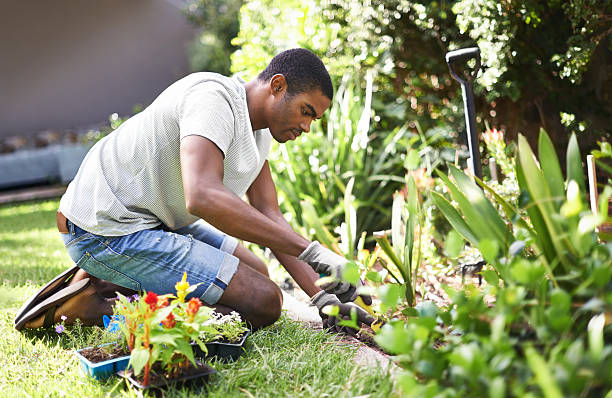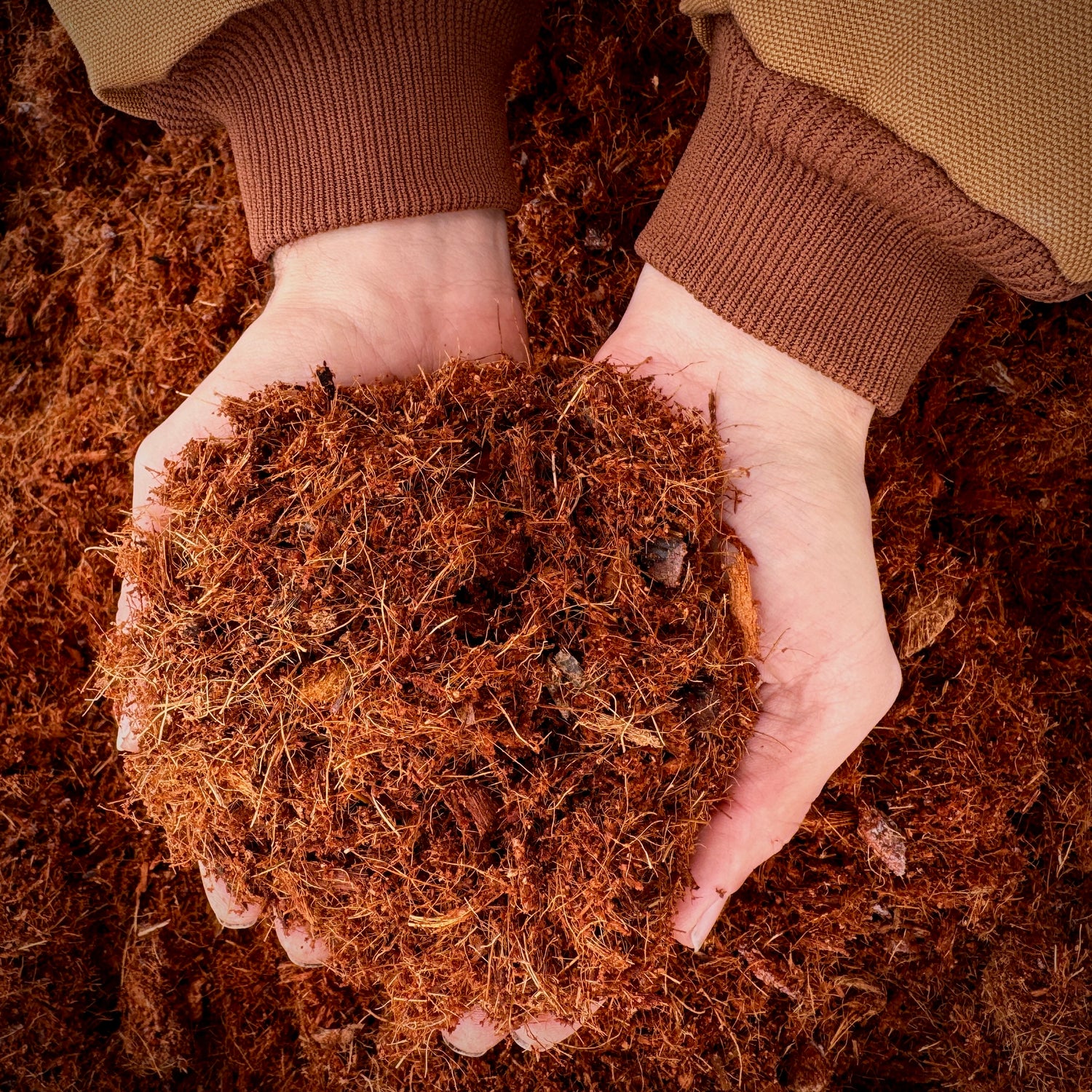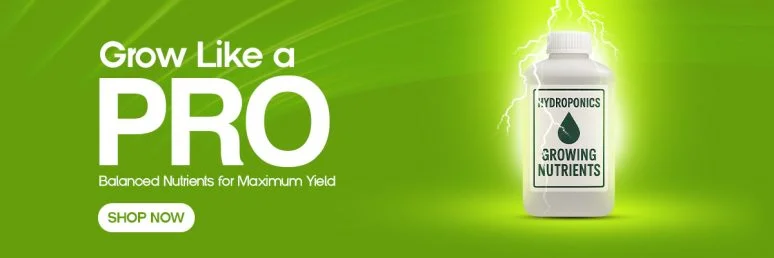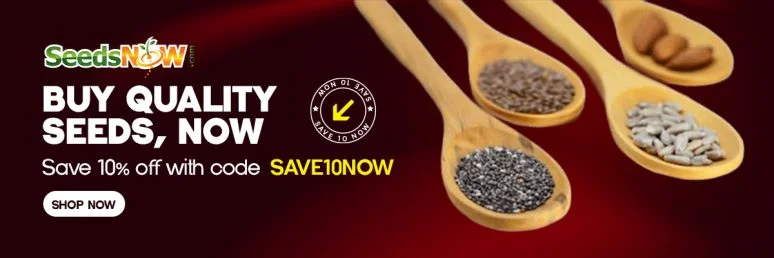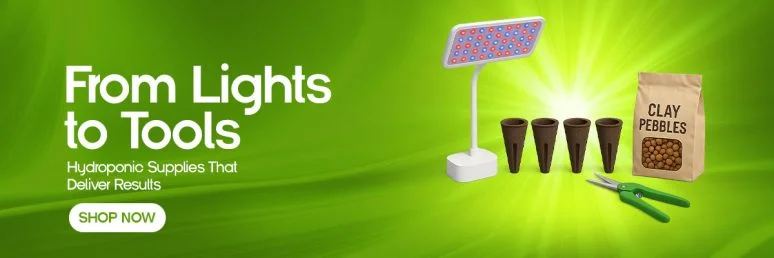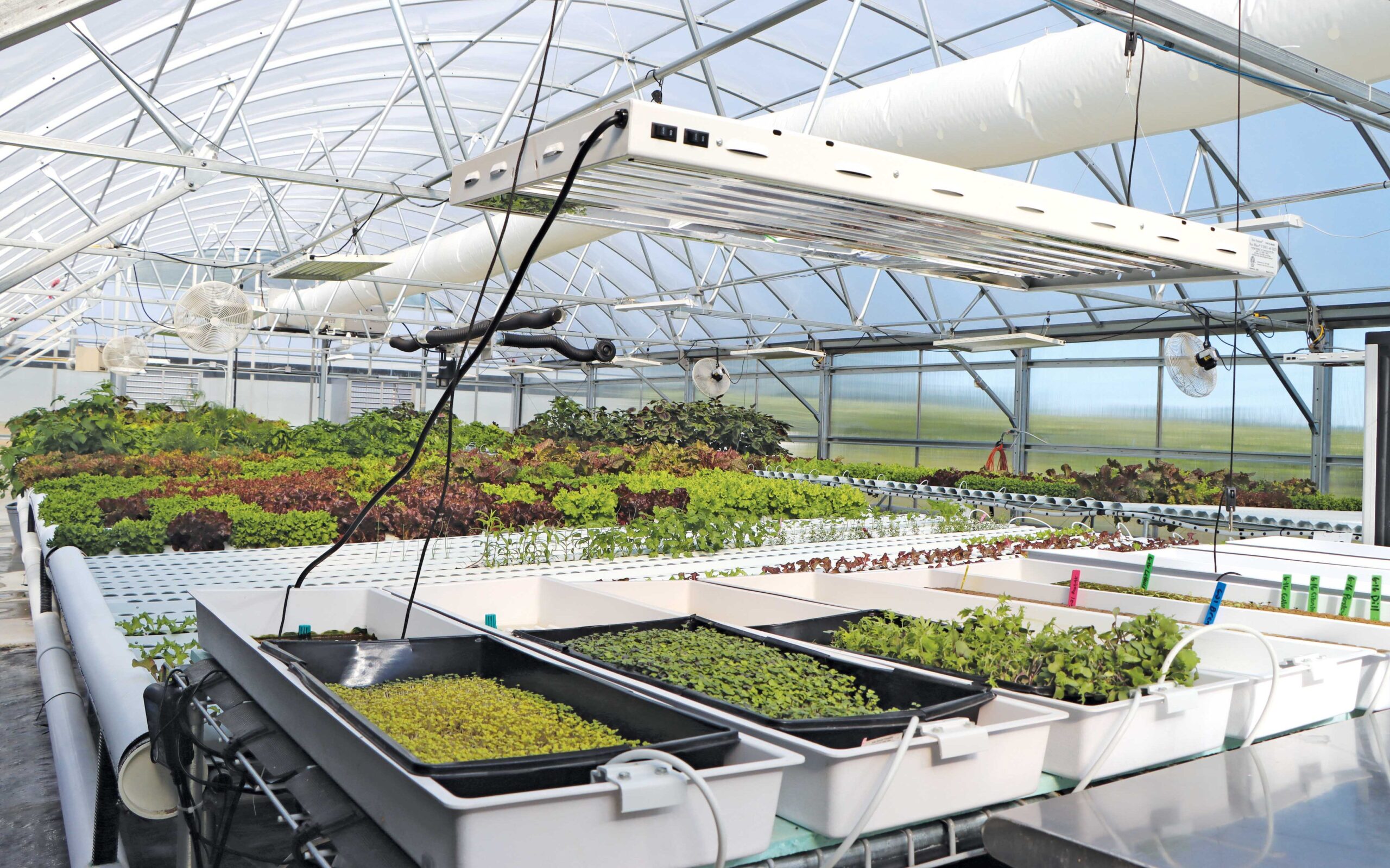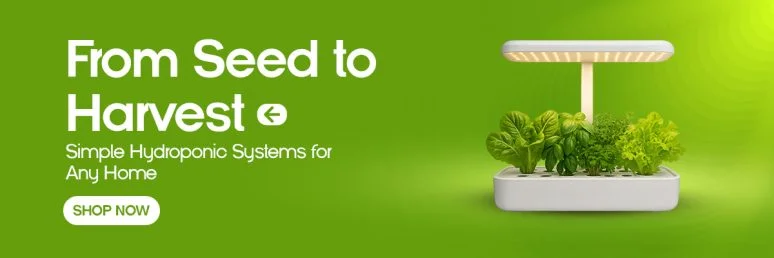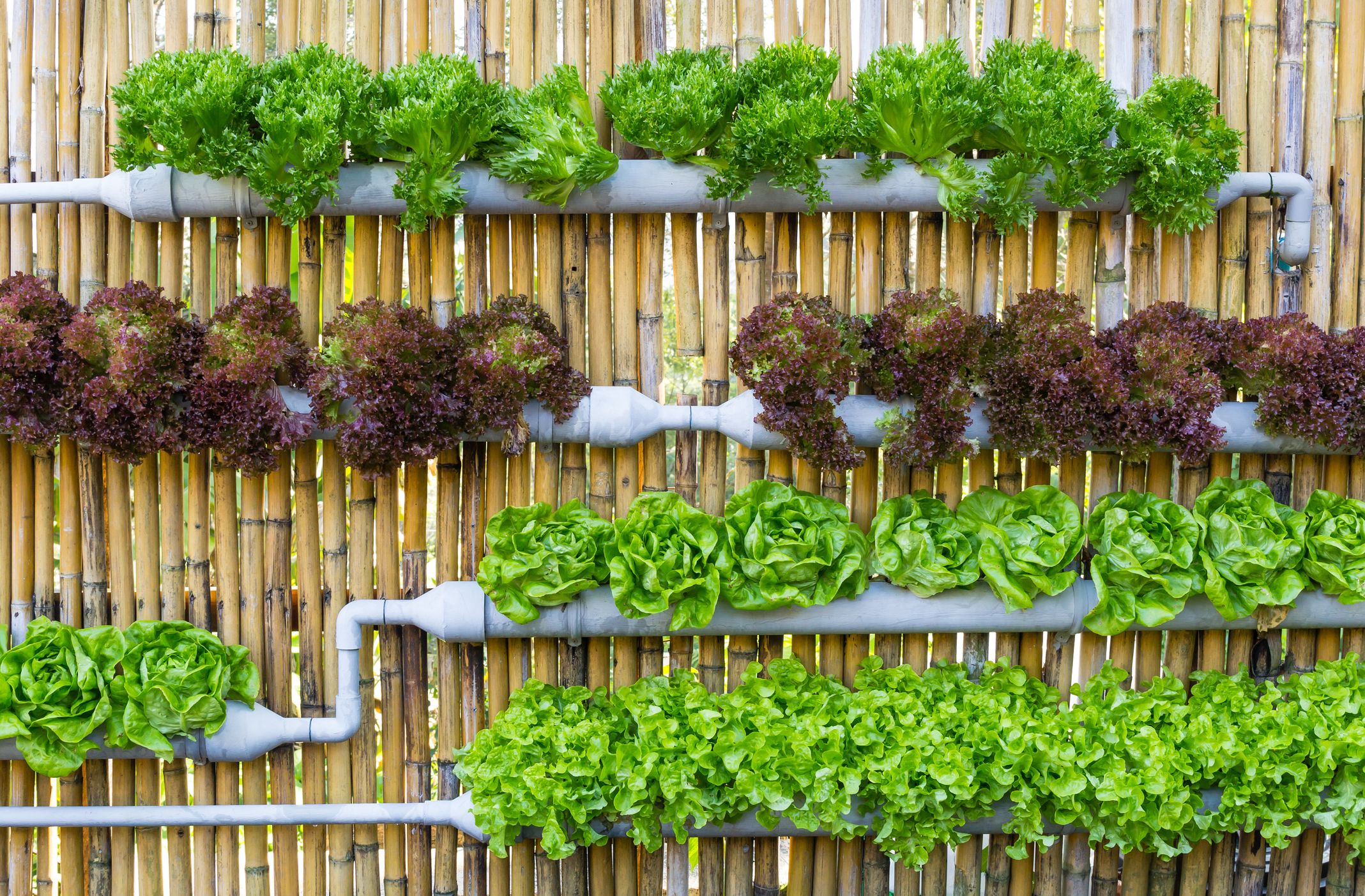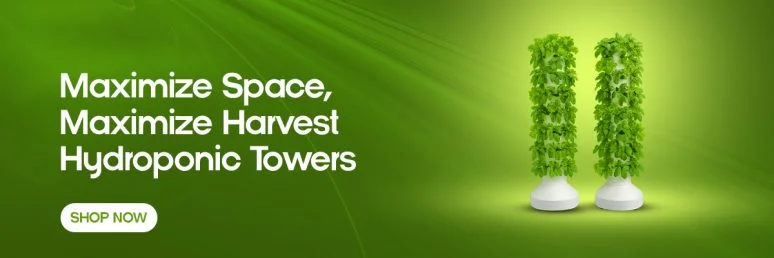What Are 4 Examples Of Soilless Medium? Alternatives Explored

Key Takeaways
- Soilless mediums like coco coir, perlite, rockwool, and hydroponic systems offer superior aeration and water control compared to traditional soil gardening.
- Coco coir provides exceptional water retention while being environmentally sustainable, making it ideal for moisture-loving plants.
- Mineral-based mediums such as perlite and vermiculite can be used alone or in combinations to create customized growing environments.
- Advanced soilless systems like deep water culture and aeroponics eliminate growing media entirely, allowing for maximum nutrient efficiency.
- Choosing the right soilless medium depends on your specific plants, available space, and maintenance preferences.
Why Gardeners Are Ditching Traditional Soil
“Man Kneeling Gardening Stock Photos …” from www.istockphoto.com and used with no modifications.
The gardening world is experiencing a revolution that’s changing how we think about plant cultivation. Soilless gardening—also known as hydroponics, container gardening, or growing in alternative media—is rapidly gaining popularity among both commercial growers and home gardeners. Traditional soil comes with limitations: it can harbor diseases, pests, and weeds, while offering less precise control over nutrients and moisture. Soilless mediums address these challenges by providing sterile, customizable environments that maximize plant growth potential.
Modern gardeners are increasingly discovering that soilless media offer exceptional control over root zone conditions. With these alternatives, you can precisely manage water retention, aeration, and nutrient delivery—factors that directly impact plant health and productivity. The ability to create optimal growing conditions regardless of your local soil quality has made soilless gardening a game-changer for urban gardeners, those in regions with poor soil, and anyone seeking consistent, high-quality results.
Beyond performance advantages, many soilless mediums offer sustainability benefits that align with eco-conscious gardening practices. As we explore four popular soilless growing options, you’ll discover how each alternative can be tailored to specific plants and growing situations, potentially transforming your gardening approach forever.
Coco Coir: The Sustainable Soilless Wonder
“EXPANDED COCO COIR – Call for …” from soilutions.net and used with no modifications.
Coco coir represents one of the most remarkable success stories in sustainable growing media. This versatile material is derived from coconut husks—a byproduct of coconut processing that would otherwise be discarded. Its transformation from waste material to premium growing medium highlights the innovative potential of agricultural recycling. When properly prepared, coco coir creates an exceptional environment for root development while remaining completely renewable and environmentally friendly.
How Coco Coir Is Made
The journey from coconut husk to garden-ready medium involves several critical processing steps. After coconuts are harvested and the valuable meat and milk extracted, the fibrous husks undergo retting—a process where they’re soaked in water to soften the fibers. These fibers are then separated, cleaned, and processed into various forms ranging from loose coir to compressed bricks and discs. The finest horticultural grade coir undergoes additional washing to remove salt content (a natural consequence of coastal coconut production) and brings the pH to a plant-friendly neutral range. For those interested in exploring soilless gardening further, check out these requirements for a hydroponic system.
Quality coco coir should be triple-washed to eliminate harmful salts that could damage plant roots. The best products undergo testing to ensure consistent pH levels between 5.8-6.8, making them immediately suitable for most plants without additional amendments. This attention to processing details explains why premium coco coir commands higher prices than basic varieties, but the difference in plant performance justifies the investment. For those interested in alternative growing methods, understanding the requirements of a hydroponic system can offer additional insights.
Water Retention Benefits
Coco coir’s exceptional water management capabilities set it apart from most growing media. Its unique cellular structure can hold up to nine times its weight in water while still maintaining crucial air pockets for root respiration. This balance between moisture retention and aeration creates an ideal environment for root development while reducing watering frequency—a particular advantage for busy gardeners or during hot weather periods.
Plants That Thrive in Coco Coir
While nearly any plant can grow in properly prepared coco coir, certain varieties demonstrate particularly impressive results in this medium. Moisture-loving plants like tomatoes, peppers, and cucumbers develop extensive root systems in coir’s balanced environment. Leafy greens including lettuce, spinach, and kale often show accelerated growth cycles and lush foliage when grown in coir compared to conventional soil.
Flowering plants benefit from coir’s excellent drainage properties that prevent root rot while maintaining consistent moisture. Orchids, which naturally grow attached to trees rather than in soil, find coir’s texture and moisture retention particularly accommodating. Many commercial growers have switched to coir for strawberries, reporting not only increased yields but also improved fruit quality and disease resistance.
Perlite and Vermiculite: Lightweight Mineral Options
“Perlite and Vermiculite: How to Use …” from www.supremeperlite.com and used with no modifications.
Moving from organic to mineral-based soilless media brings us to two of the most recognizable alternatives: perlite and vermiculite. These lightweight, sterile materials serve as excellent standalone growing media or components in custom soilless mixes. Both are mineral-based and offer distinct properties that can dramatically improve growing conditions for specific plants and situations.
Perlite: The White Porous Volcanic Rock
Those white, popcorn-like granules you’ve spotted in potting mixes are perlite—a volcanic glass that has been superheated until it expands to create a lightweight, porous material. This transformation creates a growing medium with exceptional drainage and aeration properties. Perlite holds little water itself but creates crucial air pockets in growing media that prevent compaction and promote healthy root development.
Commercial greenhouse operations often use course-grade perlite as a standalone medium for propagation and hydroponic systems. Its neutral pH (typically 7.0-7.5) makes it compatible with virtually any plant type, and its sterile nature eliminates disease concerns associated with soil. Perlite’s stability means it doesn’t break down over time, maintaining its structural integrity throughout multiple growing seasons.
The primary drawback of perlite is its tendency to float when saturated with water, which can lead to uneven distribution in containers. Additionally, the dust produced when handling dry perlite can cause respiratory irritation, so wearing a mask during preparation is recommended. Despite these minor considerations, perlite remains one of the most versatile and widely used soilless media components.
Vermiculite: The Heat-Expanded Mineral
Vermiculite offers complementary properties to perlite while functioning quite differently in growing systems. This natural mineral expands dramatically when heated, creating a highly absorbent, layered structure that excels at moisture retention. Unlike perlite, vermiculite holds significant amounts of water and nutrients between its layers, releasing them gradually to plant roots over time.
Seed starting applications particularly benefit from vermiculite’s moisture retention capabilities. The consistent humidity it maintains creates ideal germination conditions while its soft texture allows emerging seedlings to easily establish their first roots. Vermiculite’s slightly alkaline pH (usually 7.0-8.0) and ability to buffer nutrient solutions make it particularly valuable for plants sensitive to pH fluctuations.
Mixing Ratios for Optimal Growing
The true versatility of perlite and vermiculite emerges when they’re combined—either with each other or with other soilless components. A basic mix of 50% perlite and 50% vermiculite creates a balanced medium that provides both drainage and water retention. For moisture-loving plants, increasing the vermiculite ratio to 70% promotes higher humidity around roots, while drought-tolerant plants benefit from perlite-dominant mixes that ensure excellent drainage.
Professional growers often create custom blends incorporating these minerals with coco coir or composted bark to achieve specific growing conditions. For example, a mix of 40% coco coir, 40% perlite, and 20% vermiculite creates an excellent all-purpose soilless medium that works for a wide range of plants. The precise ratio can be adjusted based on local climate conditions, watering practices, and specific plant requirements.
Rockwool: The Stone-Based Growing Medium
“Amazon.com : Rockwool Grow Cubes (1.5 …” from www.amazon.com and used with no modifications.
Among the most technologically advanced soilless media, rockwool has revolutionized commercial hydroponics and is increasingly available to home gardeners. This remarkable material begins as actual rock—typically basalt and limestone—that undergoes an incredible transformation. The manufacturing process melts these rocks at temperatures exceeding 2,900°F (1,600°C) before spinning the molten material into fine fibers resembling cotton candy, which are then compressed into slabs, cubes, or loose material.
Manufacturing Process
The precise manufacturing control of rockwool creates a growing medium with remarkably consistent properties. After the initial melting and spinning process, the fibers are compressed to specific densities and treated with wetting agents to overcome the material’s naturally hydrophobic properties. The resulting product provides exceptional structural stability while weighing significantly less than most other growing media. Commercial growers particularly value this consistency, as it enables predictable water and nutrient management across large-scale operations. For more information on choosing the best growing medium for hydroponics, explore our detailed guide.
Modern rockwool production has addressed earlier environmental concerns by developing biodegradable binders and implementing closed-loop manufacturing systems that minimize waste. Some manufacturers now offer rockwool with adjusted pH levels specifically formulated for horticultural use, eliminating the pre-soaking and pH adjustment previously required before use.
Exceptional Water and Air Balance
What truly distinguishes rockwool from other soilless media is its perfect balance of water retention and aeration. The fibrous structure holds approximately 80% water and 15% air even when fully saturated, creating ideal root zone conditions. This remarkable property eliminates the oxygen deprivation that often occurs in waterlogged traditional media. Plants grown in rockwool develop extensive, healthy root systems that can access both water and oxygen simultaneously.
The consistent vertical channels within rockwool’s structure promote natural drainage that prevents salt buildup—a common challenge in container gardening. Water moves downward through the material while still maintaining humidity around roots, creating a gradient of moisture that plants can access according to their needs. This self-regulating quality makes rockwool particularly forgiving for beginners still mastering irrigation timing.
Ideal Crops for Rockwool
Commercial greenhouse operations have demonstrated rockwool’s exceptional performance with fruiting crops like tomatoes, peppers, and cucumbers. These plants benefit from rockwool’s outstanding root zone aeration that prevents the fungal diseases common in denser media. The material’s stability throughout long growing seasons makes it particularly suitable for indeterminate varieties that produce continuously over extended periods.
Propagation applications represent another strength of rockwool, which is widely available in starter cubes specifically designed for seeds and cuttings. These precisely engineered cubes maintain the perfect moisture level for germination while providing enough structural integrity to support developing seedlings. Once roots become visible at the cube’s exterior, plants can be easily transferred to larger rockwool blocks or slabs without the transplant shock often experienced with soil-based systems.
Hydroponic Systems: Growing Without Any Medium
“Hydroponic Growing Systems …” from www.growspan.com and used with no modifications.
The ultimate expression of soilless cultivation comes in the form of pure hydroponic systems that eliminate growing media entirely. These sophisticated approaches suspend plant roots directly in nutrient solution or mist, creating perhaps the most efficient growing environments possible. By removing physical media altogether, these systems optimize nutrient delivery, maximize oxygen availability, and eliminate many of the constraints associated with both soil and soilless media.
Deep Water Culture (DWC)
Among the simplest true hydroponic approaches, Deep Water Culture suspends plants above nutrient solution with roots fully immersed in the liquid. Air stones and pumps maintain critical oxygen levels in the solution, preventing root suffocation while delivering nutrients directly to plant roots. The elimination of growing media results in exceptionally fast growth rates as plants expend minimal energy accessing water and nutrients.
Commercial DWC systems often incorporate floating rafts that support dozens or hundreds of plants across large tanks. Home gardeners can create simple DWC systems using food-grade buckets, net pots, and basic aquarium supplies. Leafy greens thrive particularly well in DWC systems, often reaching harvest size 30-50% faster than in conventional growing methods. The water-efficient nature of these closed systems makes them particularly valuable in drought-prone regions.
Nutrient Film Technique (NFT)
NFT systems represent a refinement of the hydroponic concept, flowing a thin “film” of nutrient solution over plant roots housed in channels or tubes. Unlike DWC, NFT exposes a portion of the root system to air directly, increasing oxygen availability while still providing constant nutrient access. The flowing solution prevents stagnation while continuously replenishing oxygen and nutrients. For more information on maintaining your hydroponic system, explore the 7 requirements for a hydroponic system.
Commercial lettuce and herb production has embraced NFT systems for their space efficiency and scalability. Multiple growing channels can be stacked vertically, dramatically increasing production capacity within limited footprints. Home NFT systems typically use PVC pipes with holes for net pots, creating cost-effective growing systems that can be adapted to various spaces including balconies and small yards. If you’re considering setting up your own system, it’s crucial to know what kind of pump you need for hydroponics to ensure optimal water flow and nutrient delivery.
Ebb and Flow Systems
Ebb and flow (also called flood and drain) systems periodically flood growing containers with nutrient solution before draining it back to a reservoir. This cycling action draws fresh oxygen into the root zone during the drain cycle while delivering nutrients during the flood phase. The intermittent nature of the irrigation creates a dynamic environment that many plants respond to with vigorous growth. For more information on alternative growing methods, you can explore alternative hydroponic growing media.
While ebb and flow systems often incorporate some growing medium to support plants and provide stability, they function fundamentally as hydroponic systems with the medium serving primarily as an anchor rather than a nutrient source. These systems excel with plants that prefer slight drying between waterings, including many herbs and flowering ornamentals. Their automated nature makes them particularly suitable for gardeners with variable schedules who cannot maintain consistent manual watering routines. For more information on alternative growing media, you can explore alternative hydroponic growing media.
Aeroponics
At the cutting edge of soilless cultivation, aeroponic systems suspend plants with roots hanging in air chambers where they receive nutrients via fine mist or fog. This approach maximizes oxygen exposure while precisely delivering nutrients directly to root surfaces. NASA has extensively researched aeroponics for space applications, finding that this method can reduce water usage by up to 98% while accelerating growth rates significantly.
Commercial aeroponic systems utilize high-pressure pumps and specialized misting nozzles to create microscopic nutrient droplets that efficiently coat root surfaces. While more technically demanding than other soilless approaches, aeroponics offers unmatched growth rates and yields when properly implemented. The exposed root environment also simplifies monitoring plant health and addressing issues before they impact plant performance.
Choosing the Right Soilless Medium for Your Garden
“How to Start a Veggie Garden: Tips for …” from www.houselogic.com and used with no modifications.
With so many compelling soilless options available, selecting the right approach requires considering your specific gardening context and goals. The ideal medium balances your plants’ biological requirements with practical considerations like your available time, budget, and space constraints. Rather than viewing these options as competing alternatives, consider how different soilless media might serve different areas of your garden or different stages in your plants’ development. For more insights, you might explore hydroponic system requirements to better understand how to optimize your garden setup.
Plant Type Considerations
The specific requirements of your chosen plants should heavily influence your soilless media selection. Fruiting plants that bear heavy crops often perform best in media with excellent structural stability like rockwool or coco coir that can support their weight throughout long production cycles. Leafy greens with their rapid growth cycles and high water needs thrive in systems that prioritize consistent moisture like DWC or NFT hydroponic approaches.
Root vegetables present unique challenges in soilless systems, generally performing best in deeper containers filled with loose coco coir or perlite mixes that allow unrestricted development. Perennial plants that remain in their growing environment for multiple seasons benefit from media with slower decomposition rates and stable physical properties. By matching media characteristics to plant requirements, you can create optimized growing conditions that maximize both yield and quality.
Space and Budget Constraints
Practical considerations inevitably influence soilless gardening choices, with space limitations often determining the most suitable approach. Vertical hydroponic systems require minimal floor space while potentially producing substantial harvests—making them ideal for urban environments or small gardens. Container-based systems using coco coir or perlite/vermiculite mixes offer flexibility to utilize available spaces like patios, balconies, or even indoor areas with adequate lighting.
Initial investment varies significantly between soilless approaches, with simple coco coir containers representing minimal startup costs while fully automated hydroponic systems require more substantial investment. However, operational costs often invert this relationship—hydroponic systems typically use less water and fertilizer over time, while media-based systems require periodic replacement or refreshing. Considering both startup and ongoing costs provides a more accurate picture of the true investment required for each approach.
Maintenance Requirements
Your available gardening time should heavily influence your soilless media selection. Automated hydroponic systems require significant initial setup but subsequently need minimal daily attention, making them suitable for busy gardeners or those who travel frequently. Media-based containers using coco coir or perlite blends generally require more regular monitoring and watering but offer greater forgiveness for occasional maintenance lapses.
Technical comfort also influences appropriate soilless choices, with hydroponic systems requiring basic understanding of water chemistry, nutrient management, and equipment maintenance. Media-based approaches more closely resemble traditional container gardening with simpler daily requirements. Most gardeners find success by starting with familiar approaches and gradually incorporating more sophisticated techniques as their experience and confidence grow. For those exploring new methods, understanding alternative hydroponic growing media can be beneficial.
Setting Up Your First Soilless Garden
“DIY Hydroponic Garden …” from www.countryliving.com and used with no modifications.
Transitioning to soilless gardening begins with a modest, well-planned system that allows you to gain experience while minimizing risk. Starting with a simple container system using coco coir or a perlite/vermiculite mix provides an accessible entry point requiring minimal specialized equipment. This approach allows you to observe plant responses to soilless conditions and develop critical management skills before investing in more complex systems.
Required Materials
A basic soilless container garden requires surprisingly few specialized materials. Food-grade containers with drainage holes serve as excellent growing vessels, while your chosen soilless medium forms the foundation of the system. A quality liquid fertilizer formulated specifically for soilless cultivation provides essential nutrients, with options ranging from organic formulations to synthetic nutrients designed for specific plant types. Basic monitoring tools including a pH meter and electrical conductivity (EC) tester help manage nutrient levels and prevent common problems before they affect plant health.
For those exploring hydroponic options, starter kits have simplified initial setup considerably. These typically include appropriately sized containers, pumps or air stones if needed, net pots to support plants, and often basic nutrients to begin growing. While commercial kits offer convenience, many gardeners successfully build DIY systems using readily available components from hardware and aquarium supply stores at significantly lower costs.
Step-by-Step Setup Process
Proper preparation of your chosen medium represents the most critical step in establishing a soilless garden. Coco coir typically requires thorough rinsing and pre-hydration before use, while rockwool benefits from soaking in pH-adjusted water to neutralize its naturally alkaline properties. Perlite and vermiculite generally require minimal preparation beyond measuring and mixing in appropriate ratios for your intended plants.
Container selection should prioritize adequate drainage and appropriate volume for your plants’ root systems. Many experienced soilless gardeners prefer fabric containers that promote air pruning of roots and prevent circling, but plastic containers with ample drainage holes also perform excellently. Regardless of container type, elevating them slightly improves drainage and prevents waterlogging that can occur when containers sit directly on solid surfaces. For more information on alternative growing methods, you can explore alternative hydroponic growing media.
Initial planting techniques vary somewhat between media types but generally involve creating an appropriately sized hole in pre-moistened media, carefully placing your plant while avoiding root damage, then gently securing the plant without compacting the medium. Newly established plants benefit from frequent light irrigation rather than infrequent deep watering until their root systems develop throughout the growing medium.
Nutrient Solutions for Soilless Gardens
Unlike conventional soil that contains many plant nutrients naturally, soilless media rely entirely on added fertilizers to support plant growth. Complete nutrient solutions specifically formulated for soilless cultivation provide all macro and micronutrients in balanced ratios appropriate for different plant types and growth stages. Most commercial formulations offer separate vegetative and flowering formulas that adjust nutrient ratios to support either foliage development or fruit and flower production.
Proper dilution and application frequency depend on both your chosen medium and specific plants. Media with significant nutrient-holding capacity like coco coir benefit from less frequent feeding with more dilute solutions, while pure hydroponic systems typically require stronger nutrient concentrations delivered more frequently. Regular monitoring of electrical conductivity provides valuable feedback on nutrient levels, helping prevent both deficiencies and toxic buildup of excess minerals.
The Future of Soilless Gardening
The trajectory of soilless growing technologies points toward increasingly sophisticated but user-friendly systems that maximize production while minimizing resource inputs. Automated monitoring and adjustment systems are becoming more affordable and accessible to home gardeners, with sensors and controllers managing irrigation, nutrients, and environmental conditions with minimal human intervention. These advances promise to remove much of the technical complexity that has historically limited wider adoption of soilless methods.
Sustainable materials development represents another exciting frontier, with researchers exploring biodegradable and renewable alternatives to traditional growing media. Upcycled agricultural and industrial byproducts are showing promise as soilless media components, potentially reducing environmental impacts while creating value from materials previously considered waste. These innovations align soilless gardening more closely with circular economy principles that increasingly inform agricultural practices worldwide.
Perhaps most significantly, soilless growing technologies are democratizing food production in unprecedented ways. By removing the requirement for quality soil—a resource increasingly degraded and difficult to access—these approaches enable productive gardening in urban environments, contaminated areas, and regions with naturally poor soils. This accessibility expands who can grow food and where it can be produced, potentially transforming our food systems toward more resilient, distributed models that better serve communities worldwide.
Frequently Asked Questions
As soilless gardening continues gaining popularity, newcomers naturally have questions about these innovative approaches. The following answers address the most common inquiries and concerns, helping you navigate your soilless gardening journey with confidence and realistic expectations.
Is soilless gardening more expensive than traditional soil gardening?
Initial setup costs for soilless systems typically exceed traditional soil gardening, particularly for hydroponic systems requiring pumps, containers, and monitoring equipment. However, the ongoing operational costs often favor soilless approaches, which generally use 70-90% less water than conventional gardening while reducing fertilizer requirements through more efficient delivery. When considering long-term costs, many soilless systems prove economically advantageous, especially in regions with water restrictions or high water costs. Additionally, the potentially higher yields and crop quality from optimized growing conditions can offset initial investments for those growing high-value crops.
Can all plants grow in soilless mediums?
While most plants can thrive in properly managed soilless systems, certain varieties demonstrate particularly impressive performance in these environments. Fruiting crops like tomatoes, peppers, and cucumbers consistently excel in rockwool and coco coir, while leafy greens and herbs often achieve remarkable growth rates in hydroponic systems. Root vegetables present greater challenges in some soilless systems but can succeed in deeper containers with appropriate media. Plants with highly specialized growing requirements, such as those adapted to bog conditions or extreme soil types, may require customized soilless approaches that replicate their native conditions.
How often should I replace my soilless growing medium?
Replacement schedules vary significantly between different soilless media. Inorganic options like perlite, vermiculite, and rockwool maintain their physical structure for extended periods, often remaining viable for multiple growing seasons with proper cleaning between crops. Organic media like coco coir gradually decompose over time, typically requiring replacement annually or after 2-3 crop cycles. Pure hydroponic systems without solid media require only periodic reservoir cleaning and solution replacement rather than media changes. Regular monitoring of drainage and aeration provides the best indicator of when replacement becomes necessary—when water movement through the medium slows noticeably or the material begins compacting, replacement time has arrived. For more information on choosing the best medium, check out best growing medium for hydroponics.
Do soilless mediums need different fertilizers than soil?
Soilless cultivation does require fertilizers specifically formulated for these growing environments. Unlike soil that provides some nutrients naturally and buffers pH fluctuations, soilless media rely entirely on added nutrients and have minimal buffering capacity. Complete hydroponic nutrients contain precise ratios of all essential macro and micronutrients in forms readily available to plants without soil’s microbial conversion processes. Many quality formulations include pH buffers that help maintain optimal nutrient availability despite the limited buffering capacity of soilless media.
- Hydroponic nutrients typically provide nitrogen in both nitrate and ammonium forms for balanced uptake
- Chelated micronutrients ensure availability across varying pH ranges
- Two or three-part solutions allow customization for different growth stages
- Organic options combine natural ingredients with solubility enhancements for soilless applications
- Calcium and magnesium supplements often complement base nutrients for heavy-feeding crops
Proper dilution rates prove critical when using soilless fertilizers, as their concentrated formulations can damage plants if applied at excessive strengths. Starting with half the recommended concentration and adjusting based on plant response offers the safest approach for beginners. Regular monitoring of electrical conductivity provides valuable feedback on nutrient levels, helping prevent both deficiencies and toxic accumulation.
Can beginners successfully grow plants in soilless mediums?
Soilless gardening has become increasingly accessible to beginners through simplified systems, improved growing media, and abundant educational resources. Starting with forgiving media like coco coir or perlite/vermiculite blends in simple containers provides an excellent introduction to soilless techniques without requiring specialized equipment or technical expertise. These approaches closely resemble conventional container gardening while offering the performance advantages of soilless cultivation.
Beginning gardeners typically achieve the greatest success by starting with naturally adaptable, vigorous plants like lettuce, herbs, or cherry tomatoes that demonstrate good tolerance for fluctuating conditions. These forgiving crops provide opportunities to develop management skills while still delivering satisfying harvests. As experience grows, gardeners can gradually incorporate more sophisticated techniques and technologies to improve results further, such as using the best hydroponic fertilizers for tomato plants.
The most important factor in beginner success remains realistic expectations and a willingness to learn from both successes and challenges. Soilless gardening offers tremendous potential but involves a learning curve like any worthwhile skill. By starting small, observing closely, and adjusting practices based on plant responses, beginners can enjoy the remarkable benefits of soilless cultivation while developing the experience needed for more advanced applications. With innovative companies like Hydro Growing Systems providing accessible soilless gardening solutions, even first-time gardeners can successfully grow flourishing plants without traditional soil.
